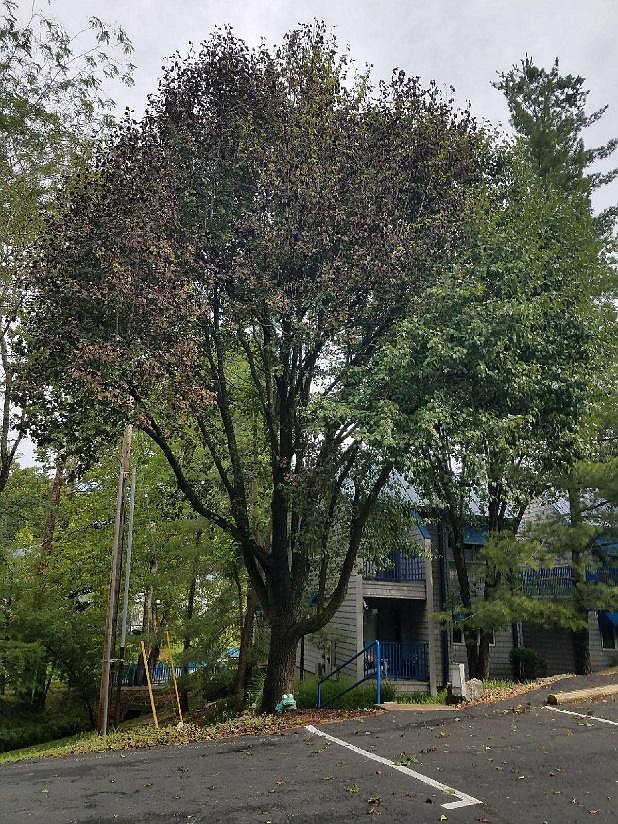Q. I haven’t been seeing any honeybees. I have green beans, tomatoes and zucchini. Don’t I need the bees to pollinate them? I’m not seeing any bees in my lawn on white clover. I live out in the country, and no one keeps bees around here.
A. Green beans and tomatoes are both self-pollinated, so they don’t need bees to set their pods or fruit. For zucchini and any of the Cucurbit vegetables (cucumbers, melons, pumpkin and squash), honeybees or some other pollinator are required to move the pollen from a male flower to a female one. When the plants in this family begin blooming, the male flowers open first to attract the pollinators. Hopefully, by the time female flowers open (about a week later), they are busy in your patch. If you don’t see them, then you can try hand-pollinating the first open female flowers you see. This is relatively easy to do on zucchini and is kind of fun. To do so, pick an opened male flower, which rests on a base like a thin pencil (the base of a female looks like a tiny fruit). Then pick off the petals and touch the end of it (the stamen, which has pollen on it) to the center of the female flower. Mid-morning is a good time to do this, and once you start noticing bees, you can stop.
Flowers differ on their attractiveness to bees. The Cucurbit family is very attractive, so eventually the bees usually find them and then reliably visit. Honeybees also like clover, but many other flowers are more desirable. It has to do with the amount of nectar and pollen. In terms of honeybees being in your area, if there are no hives being kept, then you’ll need other pollinators or feral honeybees. Squash bees are frequently around home gardens. As for feral honeybees, they are common in woods, especially when they are near a water source like a creek or small river.
Q. I want to use mulch of wood products like bark or chips, but am concerned about it attracting termites if it is close to buildings. Could you describe what’s the situation?
A. The foremost rule is that the wood of a building should not contact the soil directly. After that, it becomes more nuanced. Wood mulch and soil that is kept moist all the time will attract termites. So, having flowerbeds right up to and against a structure needs to be given some consideration. If that structure wall is solid concrete and any wood siding, beams or walls are a foot above the soil line, then it is OK. Generally, one prefers to slope soil away from buildings and keep that first foot or two dry. For anyone with gardens right up against a building, reviewing our publication on termites might be a good idea, as with brick, rock and cinder foundations these creepy critters can take advantage of inside passages or mortar cracking. See Subterranean Termites at extension.missouri.edu/p/G7420 .
Q. We’ve been having trouble with the growth on tomatoes, cucumbers and green beans — some look diseased. We spray them about once a week, but it isn’t convenient to water them. Why aren’t they doing better?
A. A healthy plant is more disease-resistant, so when we have a hot, dry spell similar to this early June, the plants will suffer. Some typical symptoms of plants that are heat stressed can be similar to a disease, or a plant may be more likely to have a disease worsen. Plan on watering a vegetable garden once or twice a week — twice if we’ve had no rain and once if we get just one nice rain that week. Nice would be ¾-1½ inches.
Q. I noticed two trees having problems with their leaves. One is a Bradford pear and the other is a sycamore. What is going on? (see photos)
A. I understand you were in the area around the lake that had very heavy rains in May and late April. When this occurs, tree roots don’t grow as deeply as normal, and some roots may die, being suffocated in waterlogged conditions. Since the parking area runs off on the trees, it is even worse. So when a hot, dry spell hits, the tree roots have difficulty keeping up with the moisture demands of the leaves. The heat conditions for those trees are worse than for other trees in the vicinity, as these are adjacent to a hot parking lot. The trees should survive but may not look too good this summer.

